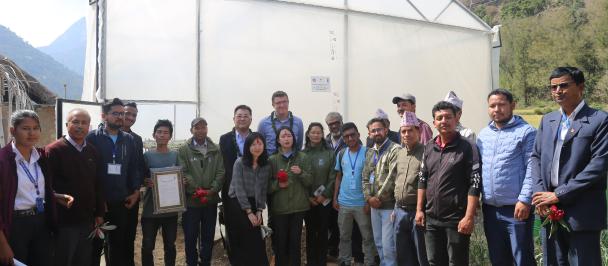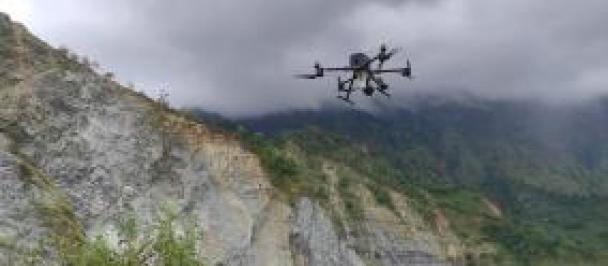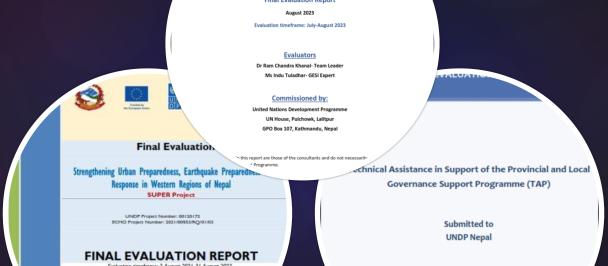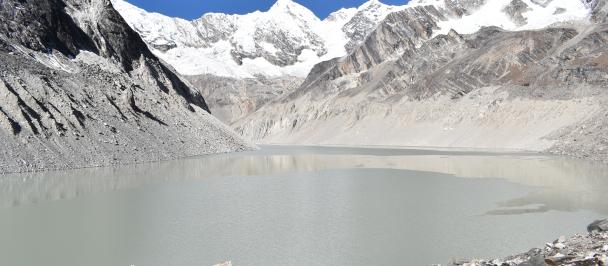In The Spotlight
Nima Rinji Sherpa, a teenage mountaineer's journey amid climate challenges
March 12, 2024

In a world where most teenagers are preoccupied with academics and social activities, some embark on extraordinary journeys. Meet Nima Rinji Sherpa, a young mountaineer whose passion for scaling peaks defies conventional teenage pursuits. In this exclusive interview with UNDP’s Kamal Raj Sigdel and WFP’s Monica Upadhyay, Nima Rinji Sherpa shares insights into his remarkable journey, motivations, and aspirations, offering a glimpse into the life of a Sherpa climber amidst changing mountain landscapes and global challenges. From his inaugural ascent of Mt. Manaslu to climbing multiple 8,000-meter summits, Nima narrates his mountaineering odyssey with determination and purpose. As the son of a seasoned climber, he draws inspiration from his Sherpa heritage, aiming to redefine perceptions and carve a niche beyond traditional guiding roles.
Beyond personal triumphs, in this interview with UNDP’s Kamal Sigdel, Nima reflects on the environmental impacts of climate change on mountain ecosystems and the Sherpa community's resilience amid evolving challenges. With a vision to promote sustainable tourism and empower Nepali youth, he advocates for harnessing Nepal's untapped potential, echoing a message of hope and opportunity for his homeland. Join us as we delve into the remarkable exploits and aspirations of Nima, a testament to the spirit of adventure, resilience, and ambition that transcends age and altitude.
Tell us about your journey in brief.
I first summited Mt Manaslu after passing my Grade 10 (SEE) examination. Within one month of this, I then summited Mt Ama Dablam. After this, I climbed Mt Everest and Mt Lhotse. I reached Mt Lhotse within nine hours from Everest. I climbed Mt Everest and Mt Lhotse along with Pasang Nurbu Sherpa. I then went to Pakistan and climbed five major 8,000-meter mountains within one month. Later I climbed Mt Dhaulagiri and Mt Cho-Oyu. I have climbed 10 mountains already.
My goal in life is to be the top athlete in the world in the mountain sector. Across the world, various brands are investing in the athlete, and I want these brands to come to Nepal. Also, globally, Sherpa people are known as guides. However, I want to change this perception. I aim to be the transition from being a guide to becoming an athlete and be known across the world. For this, I am working hard, both in terms of training and education. Similarly, by doing this, I also want to work for nature conservation. I aspire to bring top athletes from Nepal and showcase their talents to the world, not only in the mountaineering sector only but across various other fields as well.

While people of your age are worried about their grades, you’re climbing mountains and concerned about their future? Why the rush to climb the mountains? What’s the motivation behind this?
I started my mountaineering journey by ascending Mt. Manaslu almost two years ago. After that, I felt strong and didn’t want to create a long gap before my second climb. My goal is to climb all 14 peaks during my teenage years which would allow me to focus on other things later. Similarly, as my father is also associated with mountaineering, I had no issues regarding logistics and finance. I wouldn’t say I am in a rush. I simply wish to climb all the 14 peaks while I’m still in my teens and focus on different interests later in life.
As a climber, what kind of impact have you observed on mountains due to climate change? How has it affected livelihoods and food security?
Comparing the old photos of Mt Everest and Mt Lhotse with the current situation, the glaciers have expanded and are advancing. While staying at the base camp, I could hear the sound of streams [due to rapid melting of snow]. In terms of livelihood of people living nearby areas, they are benefitting from fresh water as glaciers are the source of freshwater. However, these villages are at risk due to the potential for glacier lake outburst. Such incidents were reported in 2015-16. I have also heard that there are 21 dangerous lakes at risk [UNDP-ICIMOD report].
I haven’t observed long-term changes as I have recently joined mountaineering. However, during my recent visit to Namche, I heard that earlier there used to be heavy snowfall there, but it has decreased in recent times. Also, I have heard that an entire village had to relocate to another place due to glacier lake outburst.
I believe that these problems will be solved gradually as more and more people have become concerned regarding this. We are also working to raise awareness.
Mountaineering is a highly risky business. What motivates you to do it?
For me, belonging to the Sherpa community is the biggest motivation to do mountaineering. Globally, I am known as a Sherpa rather than by my name, which makes me very happy. I want to be an ambassador for Sherpa people. Additionally, my friends used to tease me by saying that I must have climbed Mt Everest because I am a Sherpa. My family is also my biggest supporter, and I feel no pressure or fear even when my expedition is tomorrow. I just pack my bags and feel that I am ready for the expedition without any hurry or rush.
Sherpas are known worldwide for their exceptional abilities in high altitude adventures. What makes you so extraordinary?
Sherpas live in high altitude. People from Sherpa villages have access to organic food, fresh water and air. Growing up in such an environment makes us strong from childhood. Similarly, Sherpa children have to walk for four to five hours just to attend school. By the time they are old enough to trek and climb mountains, they are already strong. According to various research studies, it has also been suggested that the Sherpa people have better oxygen flow in their mitochondria compared to others. Most importantly, I believe that Sherpa people’s deep connection to the mountain and nature contributes to their strength.
What is your favorite food?
For me, there is no such thing as favorite or less liked food. I eat every kind of food. Additionally, in the mountain region, there is no other option. When in higher altitudes, we used to have only ramen and noodles. Also, having lived in a hostel, I don’t have any specific favorite food. I believe that it is very important to be happy and satisfied with what you have in the mountainous region. Instead of having expectations regarding the food, focus on your goal.
There are differences in the lives of climbers and ordinary people. When you go to expeditions, what do you miss the most?
For me, family is the most important. I would miss my father, mother, brother, sister as well as friends and community. While some teenagers might find going to clubs' fun, that’s not the case for me. Climbing, hiking, talking to people and engaging in other outdoor activities are fun for me.
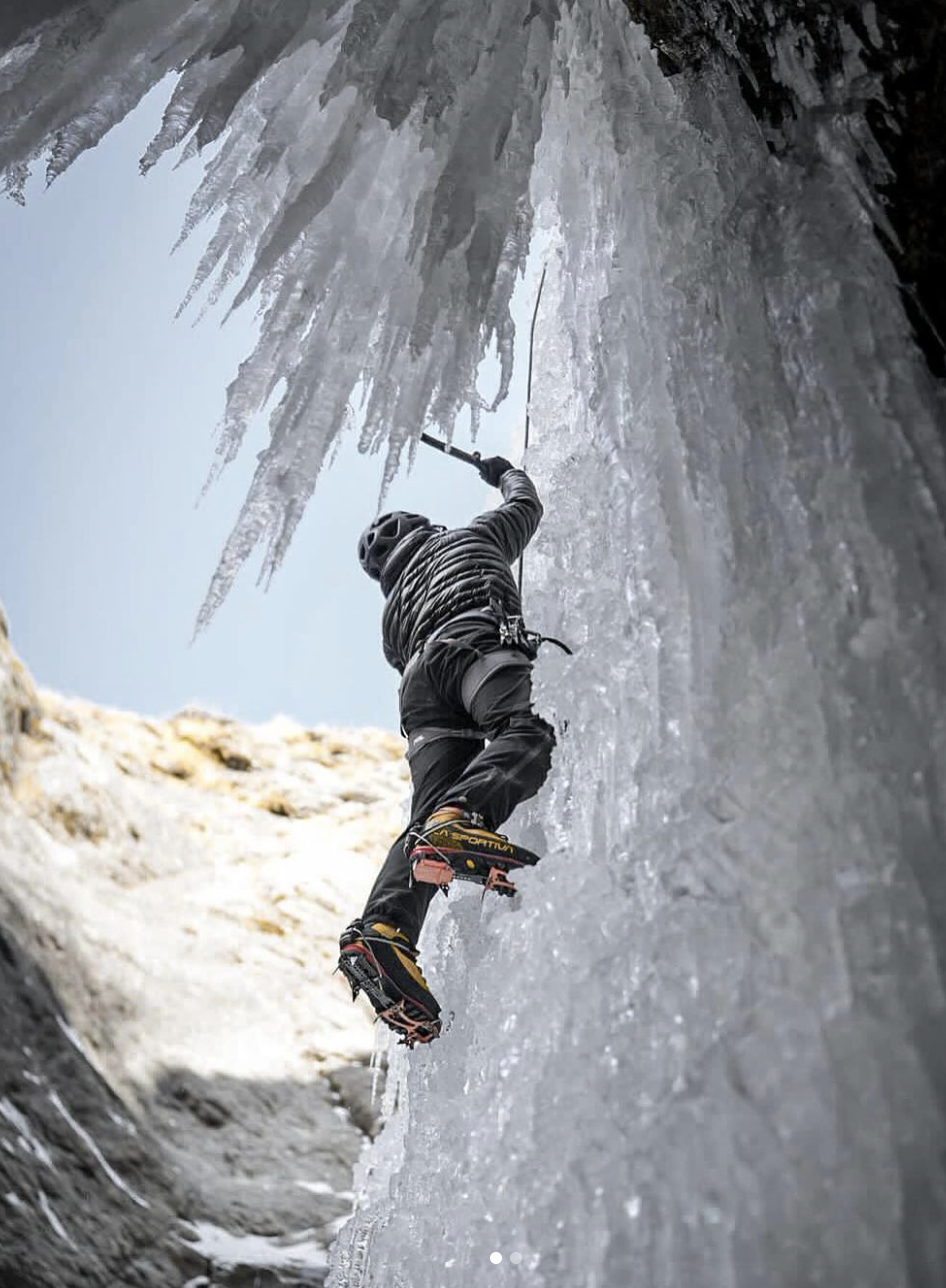
What’s it like having a climber as your dad? How does it influence you?
Having my dad as a climber, I don't see it as pressure, instead, it serves as motivation for me. I believe that everyone needs motivation in life; otherwise, they will not know what to do in life. During my childhood, I would see my father climbing, and I used to think that his blood was in my veins, thus, I would be the same. However, my father never forced me to do mountaineering. When I was a child, I wanted to become a football player, and he supported that. Later, when I wanted to be a mountaineer, he supported that as well.
Many young people of Nepal are leaving the country and going abroad. What are your thoughts on this?
Young people are leaving Nepal, and they have their own reasons. There is a narrative that life will be better when they go abroad. However, what I feel is best for Nepal is tourism. I don’t want to go abroad. My aim is to promote mountaineering and tourism in Nepal and increase the involvement of youth in this sector. Nepal has such great potential for tourism, for example, cycling and running trails in Solukhumbu region, paragliding from the highest point, snowboarding and outdoor activities. I want to promote these. The Alaska region of the USA generates one billion dollar revenue through its outdoor activities attracting one million tourists every year. I see the same opportunity in Nepal too. Thus, I want to commercialize and bring sustainable tourism to Nepal.
What is your message to youths?
There is lots of hope in Nepal and I am one of them. Nepal is a wonderful place to live; all we need to do is put in our efforts and strive hard. I urge the youths to return to Nepal and contribute to the promotion of tourism in our country. Together, we can build a better future for Nepal.

 Locations
Locations
